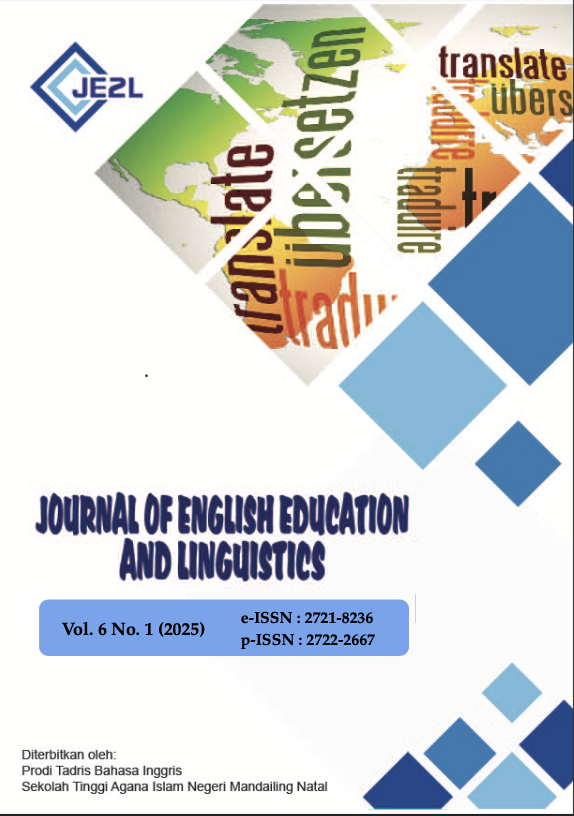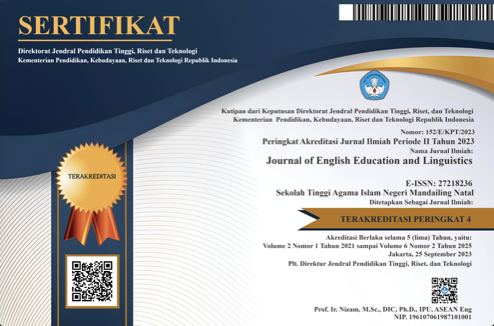THE IMPLEMENTATION OF STORYTELLING LEARNING IN SPEAKING THROUGH TWO STAY TWO STRAY
DOI:
https://doi.org/10.56874/jeel.v6i1.2250Keywords:
Speaking, Storytelling, Two Stay Two StrayAbstract
English holds significant importance for students for a multitude of reasons, impacting their academic, professional, and personal development. Numerous scholarships and international exchange programs require proficiency in English, opening doors to global educational experiences this study aims to find out the application of the Two Stay Two Stray strategy through Storytelling in the learning process, find out Two Stay Two Stray strategy through Storytelling that improve students' speaking ability, and know obstacles in implementing Two Stay Two Stray strategy through Storytelling. This research uses qualitative methods with descriptive explanations. The results of this study found that the teachers are successful in implementing storytelling learning in speaking through the Two Stay Two Stray strategy. The obstacles which are faced by the teachers are 1) students have various characteristics, 2) students have low vocabularies, and so on. Meanwhile, the opportunities that are faced by the teachers are 1) the dynamic nature of Two Stay Two Stray keeps students actively engaged, 2) regular practice in speaking and presenting stories builds students’ confidence, and so forth. The English teachers’ interviews show that the teachers succeed in implementing storytelling learning in speaking through Two Stay Two Stray. Besides, the students’ interviews show that the students can enhance their speaking skills in storytelling learning through the Two Stay Two Stray strategy.
Downloads
Published
Issue
Section
License
All articles published in the Journal of English Education and Linguistics are licensed under a Creative Commons Attribution-ShareAlike 4.0 International (CC BY-SA) license. This means anyone is free to copy, transform, or redistribute articles for any lawful purpose in any medium, provided they give appropriate attribution to the original author(s) and Journal of English Education and Linguistics, link to the license, indicate if changes were made, and redistribute any derivative work under the same license.
Copyright on articles is retained by the respective author(s) without restrictions. A non-exclusive license is granted to the Journal of English Education and Linguistics to publish the article and identify itself as its original publisher, along with the commercial right to include the article in a hardcopy issue for sale to libraries and individuals.
Although the conditions of the Creative Commons Attribution-ShareAlike 4.0 International (CC BY-SA) license do not apply to authors (as the copyright holder of your article, you have no restrictions on your rights), by submitting to the Journal of English Education and Linguistics, authors recognize the rights of readers and must grant any third party the right to use their articles to the extent provided by the license.

This work is licensed under a Creative Commons Attribution-ShareAlike 4.0 International License.








